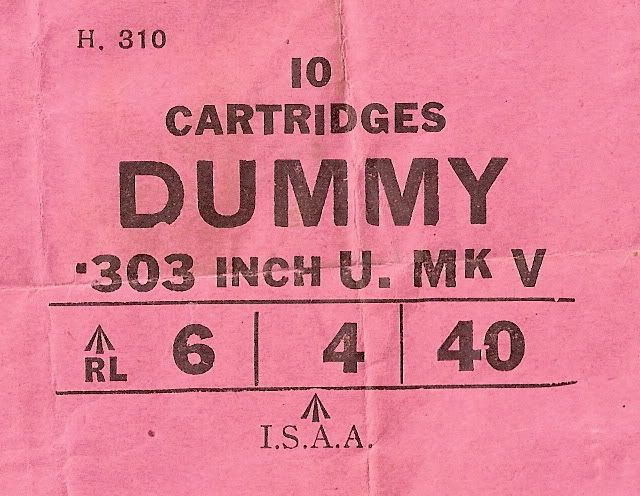TonyE
HONOURED MEMBER RIP
The .303 Inspector's Dummy U Mark V seems only to have been made by ROF Blackpole (BE) and Royal Laboratories (RL) in the UK during WW2. In the Commonwealth they were made by Australia and Canada. BTW, you are correct about MG being Footscray No.2.
The original specification for Inspector's rounds called for a tinned case and a blind cap chamber, but during war time this was relaxed and they can be found with any combination of anvil and fire holes.
The U Mark V was introduced in 1918 to be a stronger version of the previous Mark IV.
There were (obviously) five Marks of inspector's cartridge, Marks I, II and III being round nosed and Marks IV and V with spitzer bullets. Anything prior to the Mark V is difficult to find and the early Marks are quite rare now. In addition to these there were two marks of special steel inspection cartridges to be used by armourers with machine guns, one round nosed the other pointed. Both are exceedingly rare today.
Finish on the Mark V can be anything from white metal (early) to bright plating to a dull cadmium type of finish on the Australian examples. The photo shows a British example plus a couple of different Australian ones.
Post war they were made by ROF Radway Green right up to the end of the .303's life with the cadets in 1973.(although the very last ones had a ball headstamp)
I can post some pictures of the early versions if interested.
Regards
TonyE
The original specification for Inspector's rounds called for a tinned case and a blind cap chamber, but during war time this was relaxed and they can be found with any combination of anvil and fire holes.
The U Mark V was introduced in 1918 to be a stronger version of the previous Mark IV.
There were (obviously) five Marks of inspector's cartridge, Marks I, II and III being round nosed and Marks IV and V with spitzer bullets. Anything prior to the Mark V is difficult to find and the early Marks are quite rare now. In addition to these there were two marks of special steel inspection cartridges to be used by armourers with machine guns, one round nosed the other pointed. Both are exceedingly rare today.
Finish on the Mark V can be anything from white metal (early) to bright plating to a dull cadmium type of finish on the Australian examples. The photo shows a British example plus a couple of different Australian ones.
Post war they were made by ROF Radway Green right up to the end of the .303's life with the cadets in 1973.(although the very last ones had a ball headstamp)
I can post some pictures of the early versions if interested.
Regards
TonyE










